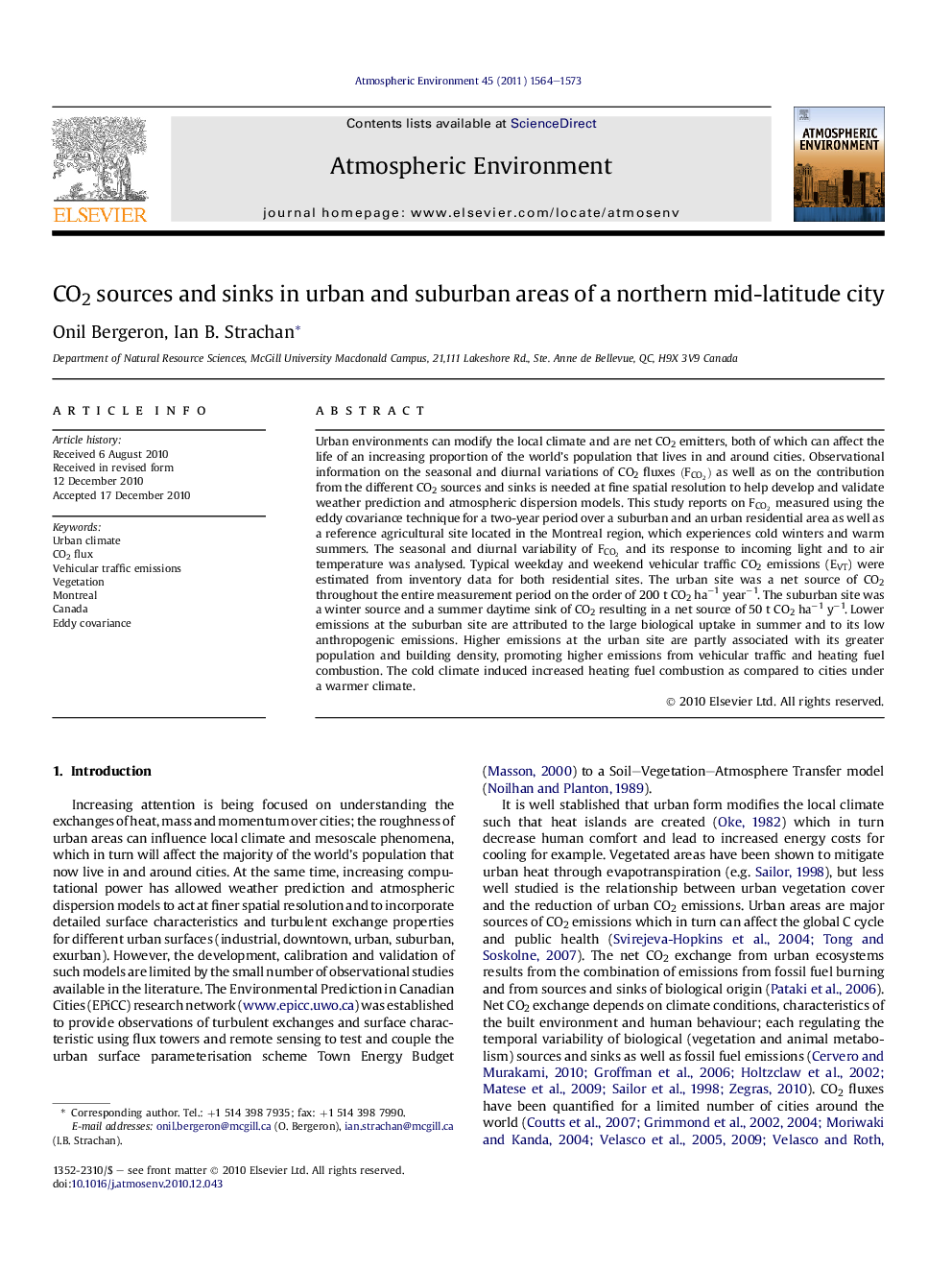| Article ID | Journal | Published Year | Pages | File Type |
|---|---|---|---|---|
| 4440056 | Atmospheric Environment | 2011 | 10 Pages |
Urban environments can modify the local climate and are net CO2 emitters, both of which can affect the life of an increasing proportion of the world’s population that lives in and around cities. Observational information on the seasonal and diurnal variations of CO2 fluxes (FCO2)(FCO2) as well as on the contribution from the different CO2 sources and sinks is needed at fine spatial resolution to help develop and validate weather prediction and atmospheric dispersion models. This study reports on FCO2FCO2 measured using the eddy covariance technique for a two-year period over a suburban and an urban residential area as well as a reference agricultural site located in the Montreal region, which experiences cold winters and warm summers. The seasonal and diurnal variability of FCO2FCO2 and its response to incoming light and to air temperature was analysed. Typical weekday and weekend vehicular traffic CO2 emissions (EVT) were estimated from inventory data for both residential sites. The urban site was a net source of CO2 throughout the entire measurement period on the order of 200 t CO2 ha−1 year−1. The suburban site was a winter source and a summer daytime sink of CO2 resulting in a net source of 50 t CO2 ha−1 y−1. Lower emissions at the suburban site are attributed to the large biological uptake in summer and to its low anthropogenic emissions. Higher emissions at the urban site are partly associated with its greater population and building density, promoting higher emissions from vehicular traffic and heating fuel combustion. The cold climate induced increased heating fuel combustion as compared to cities under a warmer climate.
Research highlights► CO2 fluxes were measured for a two-year period over agricultural, suburban and urban sites. ► Summer CO2 fluxes depended primarily on the biological component at the suburban site. ► CO2 emissions at the urban site were dominated by human activity all year round. ► The suburban and urban sites were net CO2 sources of about 50 and 200 t CO2 ha−1 year−1.
